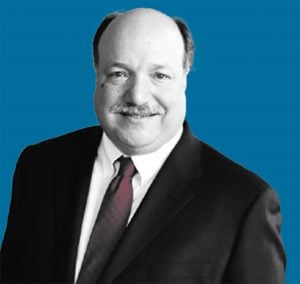 For a number of reasons, middle-aged adults seem to be mired in the pessimism inherent on the "glass half empty" side of the retirement-outlook fence. (Photo: Shutterstock)
For a number of reasons, middle-aged adults seem to be mired in the pessimism inherent on the "glass half empty" side of the retirement-outlook fence. (Photo: Shutterstock)
Public opinion polls may offer snapshot-in-time glimpses of the national psyche, but they often come up short in terms of correctly predicting the future. This is the good news that came out of a recent Gallup poll that tried to measure American's concerns about their retirement prospects.
On the face of it, the conclusion you draw from the survey depends on whether you're a "glass half empty" or a "glass half full" person. Gallup's results showed about half (51 percent) of the respondents "expected to have enough money to live comfortably when retired" and about half (46 percent) did not.
 Christopher Carosa, CTFA, is chief contributing editor for FiduciaryNews.com, a leading provider of essential news and information, blunt commentary and practical examples for ERISA/401(k) fiduciaries, individual trustees and professional fiduciaries.
Christopher Carosa, CTFA, is chief contributing editor for FiduciaryNews.com, a leading provider of essential news and information, blunt commentary and practical examples for ERISA/401(k) fiduciaries, individual trustees and professional fiduciaries.Related: 'Crisis of confidence' has retirement savers doubting their advisors
So, when it comes to retirement, is America optimistic or pessimistic? Your answer may depend upon which side of the fence you sit. The data would appear to support either conclusion.
Or does it?
A good analyst doesn't make judgments solely on the reading of a few superficial tea leaves. No, experienced analysts know to look deep into the underlying data. In this case, there may be more evidence for optimism than there might seem at first glance.
Of course, this optimism is predicated on some narrow, precisely directed pessimism. Namely, on average, Americans are no better at predicting next year's Super Bowl winner than they are at predicting what their retirement might look like a decade or so down the road.
And Gallup's statistics seem to bear this out. Nearly 1 out of every 4 of today's retirees incorrectly believed they wouldn't have enough money to retire. When interviewed between 2002 and 2004, 54 percent of the 50- to 64-year old non-retirees predicted they would have enough money to retire in comfort. Today, 77 percent of the people from that same age cohort (now aged 65 to 80) admit they do have enough money to live comfortably in retirement.
What explains this 23 percent gap between prediction and reality is less important than the existence of the gap itself.
For a number of reasons (mostly dealing with the market shock of 2008/2009 and the subsequent real-life economic malaise that followed the market's demise), middle-aged adults seem to be mired in the pessimism inherent on the "glass half empty" side of the fence. According to Gallup, only 44 percent of those aged 30 to 49 believe they will have enough money to retire in comfort. Even those currently aged 50 to 64 have a confidence level below 50 percent.
Perhaps this represents more of the typical "fear of the future" uncertainty than anything else. You remember what it felt like in high school. With the Damocles' Sword of each exam, you feared whether you'd ever make it to graduation. Now, years later, you scoff at the misplaced anxiety.
When employees express misguided pessimism regarding their retirement prospects, maybe it's better to avoid showing them the math that proves them wrong. Instead, pick a common experience—like high school graduation—where they probably felt the same worrisome emotions and show them how they managed to overcome that fear.
In other words, convert them from a "glass half empty" to a "glass half full" mindset.
Read more:
- Millennial pessimism over capitalist system, job-killing AI, affects retirement saving
- Small business owners trust financial services sector on retirement plans
- Retirement income tops sponsor concerns for plans
© 2025 ALM Global, LLC, All Rights Reserved. Request academic re-use from www.copyright.com. All other uses, submit a request to [email protected]. For more information visit Asset & Logo Licensing.







